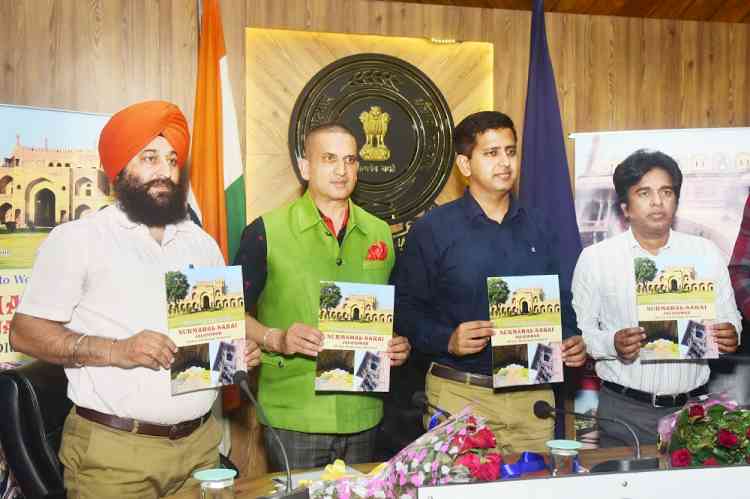People starve as grains rot; UPA unmoved
Author(s): Joginder SinghWhat prevents the ruling alliance from revamping the storage and distribution system of foodgrains in the country? Year after year, millions of tonnes either get eaten away by rats or destroyed in rains. Something...

What prevents the ruling alliance from revamping the storage and distribution system of foodgrains in the country? Year after year, millions of tonnes either get eaten away by rats or destroyed in rains.
Something is rotten in the state of Denmark”, says Marcellus in The Tragedy of Hamlet, Prince of Denmark. Even though William Shakespeare surely did not have in mind the literally rotten state of India today at the time he wrote the line, the quote unfortunately presents an accurate reflection of the country where tonnes of foodgrain continue to rot even as 140 million Indians go hungry for a month.
In August 2010, the Supreme Court had asked the Government to give away foodgrains rotting to the poor at “low cost or no cost”. This would have given relief to the country’s starving millions and also solved the Government’s problem of preserving foodgrains after a record procurement.
Indeed, of the 59 million tonnes of grain stored by the Food Corporation of India and State agencies across India, only 42 million tonnes are placed in covered buildings. The remaining have either been stored under temporary tarpaulin covers or left out in the open. And the amount that is stored as such has only been rising. It was 9.4 million tonnes in 2008, 16 million tonnes in 2009 and 17.8 million tonnes as of June 1, 2010.
The FCI had reported to the Union Ministry of Consumer Affairs, Food and Public Distribution last month that the total stock of foodgrain in the central pool was expected to be an all-time record of 750.17 lakh tonnes. It was estimated that at the beginning of June, 472.9 lakh tonnes of grain would be in the granaries of the FCI and the State Governments of Punjab, Madhya Pradesh and Haryana alone. That would be 69 lakh tonnes more than what was kept in these States, during the same period, last year. The food corporation had made clear that “the FCI and the State agencies will neither have the storage capacity nor the manpower to manage such a substantial increase in stock in the central pool.”
It is clear then that, due to shortage of storage capacity, once again millions of tonnes of foodgrain will be kept in open plinths covered with tarpaulin, under the Cover and Plinth system across Punjab, Haryana and Madhya Pradesh. It is also possible that substantial quantity may have to be stored in unscientific plinths. As a result, during the monsoon approximately 231.82 lakh tonnes of wheat will be lying under the sun on the plinths in just these three States.
In order to prevent damage to stocks (especially stock stored under the CAP system for more than one year), it is necessary that the allocation of foodgrain to State Governments be suitably enhanced. But the Group of Ministers on food has rejected the Ministry’s proposal to distribute more grains to States, citing fiscal constraints, despite FCI’s warning that the grains would rot in the open godowns once the monsoon hits the country.
The Government’s approach to the country’s hungry millions is callous, to say the least. It does not even know for certain how many poor are there in the country and how much of the foodgrain stock is currently rotting. The Planning Commission had accepted the Tendulkar Committee report which states that 37 per cent of people in India live below the poverty line, an increase of 10 per cent from the last calculation.
But two other reports produced by Government-appointed committees have pegged poverty at much higher levels. The Arjun Sengupta report says 77 per cent of Indians live on less than Rs 20 a day, while the NC Saxena Committee report has said that 50 per cent of people in India live below poverty.
The present food subsidy Bill is expected to cost the Government Rs 55,000 crore annually. That figure is likely to go up by over four times by the time the Bill becomes law. If one goes by the figures of Transparency International, nearly 68 per cent of the Government’s subsidy is siphoned off by middlemen, both in kind and in cash and sold in the black market.
Hence, while people die of hunger, the Government sits atop a mountain of foodgrains. The storage facilities of the FCI too are full of grain — in fact so full that some of the stocks are rotting and rat-infested.
A parliamentary committee has observed that some of the foodgrain was so rotten that even the animals would not eat it. They were best dumped in the sea. Another report, also by a standing committee of Parliament, estimated that the Government was spending Rs 6,200 crore every year to maintain these food stocks.
The Union Minister for Food admitted on June 20 that over 6.6 million tonnes of wheat worth over Rs 1,100 crore was lying in the open, and it was at high risk of being damaged during the monsoon season. At present, the Government has a stock of 82.3 million tonnes as against the storage capacity of 64 million tonnes. Of the 50 million tonnes of wheat procured by the Government, 27 million tonnes are kept in the open, of which 6.6 million tonnes are lying in an unscientific way.
The wastage of foodgrains is due to the negligence of the Government, which does not have adequate storage facilities. It is common sense that, unless we keep our goods safe they are likely to be stolen. The problem of the Government is that its left hand does not know what the right is doing. And even if it knows, it lacks the will to execute policy effectively. Whether for an individual or the Government, will- power is the keystone in the arch of achievement.
The real contest is always between what you have done and what you are capable of doing. You measure yourself against yourself and nobody else.

 cityairnews
cityairnews 

















